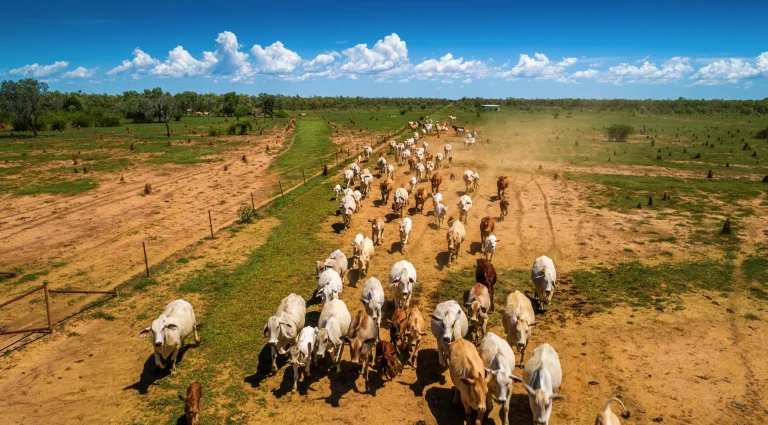Methods for Valuing Farm Infrastructure in the Livestock Sector: Professional Assessment Guide
Introduction
What determines the accurate valuation of livestock farm infrastructure, and why do traditional property assessment approaches often undervalue or misassess the specialized facilities that modern livestock operations require? Understanding the appropriate methods for valuing farm infrastructure in the livestock sector requires sophisticated assessment techniques that consider functional utility, replacement costs, technological sophistication, and operational integration factors unique to livestock farming enterprises.
Livestock farm infrastructure represents substantial capital investments including handling facilities, accommodation buildings, feed storage systems, and specialized equipment that collectively enable efficient livestock operations. These assets require specialized valuation approaches that recognize their specific utility within livestock production systems rather than general building assessment methodologies.
At Agribusiness Horizons, we specialize in comprehensive livestock infrastructure valuations that examine all asset components from basic facilities to sophisticated operational systems. Our expertise ensures accurate assessments that reflect true utility value, replacement costs, and operational benefits that livestock infrastructure provides within integrated farming enterprises.
This detailed examination will guide you through professional infrastructure valuation methodologies for livestock operations, from functional assessment and replacement cost analysis to operational value determination and depreciation evaluation. You’ll gain insights into assessment frameworks, valuation standards, and strategic considerations that professional agricultural valuers employ when determining accurate infrastructure values for livestock farming properties.
Livestock Infrastructure Valuation Landscape
Modern livestock farming operations rely on sophisticated infrastructure systems that support animal welfare, operational efficiency, and regulatory compliance requirements that have transformed traditional pastoral enterprises into complex agricultural businesses requiring specialized asset assessment approaches.
Infrastructure valuation for livestock properties has evolved from basic building assessments to comprehensive system evaluations that consider functional integration, operational efficiency, and technological sophistication that collectively determine infrastructure utility and market value within livestock production contexts.
Regulatory compliance and animal welfare standards increasingly influence livestock infrastructure valuations as facilities must meet contemporary requirements for animal housing, environmental management, and operational safety that affect both functionality and market acceptability of livestock farming assets.
Technology integration and automation capabilities have become important valuation considerations as modern livestock operations employ sophisticated systems for feed delivery, environmental control, and animal monitoring that enhance operational efficiency while requiring specialized assessment expertise.
Regional variations in livestock production systems create distinct infrastructure requirements and valuation considerations, as climate conditions, production methods, and market access factors influence optimal facility design and equipment specifications across different livestock farming regions.
Professional Methods for Valuing Farm Infrastructure in the Livestock Sector
Functional Assessment and Utility Analysis
Livestock farm infrastructure assessment approaches begin with comprehensive functional analysis that examines how effectively facilities support livestock operations, animal welfare requirements, and operational efficiency objectives. Functional assessment considers facility design, capacity, and integration within overall operational systems.
Facility capacity analysis examines animal housing capabilities, feed storage volumes, and handling system throughput that influence operational productivity and revenue generation potential. Infrastructure that supports larger or more efficient operations typically commands higher valuations due to economies of scale benefits.
Operational efficiency evaluation considers workflow design, labor requirements, and automation capabilities that influence operational costs and productivity outcomes. Well-designed facilities that minimize labor needs and maximize operational efficiency often justify premium valuations through cost savings and productivity benefits.
Animal welfare compliance assessment examines facility standards, environmental control capabilities, and regulatory adherence that affect operational viability and market acceptability. Infrastructure meeting contemporary welfare standards typically maintains higher values due to regulatory compliance and market positioning advantages.
Integration analysis considers how individual infrastructure components work together within comprehensive livestock operations, as coordinated facility systems often provide greater utility value than the sum of individual components through operational synergies and efficiency benefits.
Replacement Cost and Construction Analysis
Replacement cost methodology forms a fundamental component of livestock infrastructure valuation, examining current construction costs for equivalent facilities while considering design improvements and technological advancement that influence contemporary replacement requirements.
Construction cost analysis considers material costs, labor requirements, and specialized construction techniques required for livestock facilities including concrete work, steel framing, and environmental control systems that influence total replacement costs and facility specifications.
Engineering assessment examines structural integrity, design adequacy, and construction quality that influence facility longevity and replacement requirements. Professional engineering evaluation provides insights into facility condition and expected service life that affect valuation calculations.
Technology upgrade analysis considers how contemporary livestock facilities incorporate modern systems including automated feeding, environmental control, and monitoring capabilities that may differ from existing infrastructure and influence replacement cost calculations.
Site-specific factors including soil conditions, access requirements, and utility availability influence construction costs and facility design requirements that affect replacement cost calculations and valuation accuracy for livestock infrastructure assessment.
Depreciation and Condition Assessment
Physical depreciation analysis examines wear patterns, maintenance requirements, and structural condition that influence infrastructure value and remaining useful life. Professional condition assessment provides objective evaluation of depreciation factors affecting livestock facility valuations.
Functional obsolescence evaluation considers how infrastructure design and capabilities compare with contemporary standards and operational requirements. Facilities that lack modern features or efficiency standards may experience functional depreciation that reduces market value.
Economic obsolescence assessment examines external factors including regulatory changes, market conditions, and technological advancement that may affect infrastructure utility and market demand independent of physical condition factors.
Maintenance history and ongoing requirements influence infrastructure valuations through their impact on operational costs and facility longevity. Well-maintained facilities typically command premium valuations due to reduced replacement needs and extended service life.
Upgrade potential and modification capability affect infrastructure values by determining adaptation possibilities for changing operational requirements or regulatory standards. Facilities designed for flexibility often maintain higher values through adaptation potential.
Livestock Infrastructure Valuation Methodology Comparison
| Assessment Approach | Primary Application | Key Advantages | Best Suited For |
|---|---|---|---|
| Replacement Cost Method | New or modern facilities | Market-based cost foundation | Specialized livestock buildings |
| Depreciated Replacement Cost | Aging infrastructure | Considers condition factors | Mixed-age facility complexes |
| Income Approach | Revenue-generating facilities | Reflects operational value | Commercial livestock operations |
| Functional Assessment | Specialized equipment | Utility-based evaluation | Handling and processing facilities |
| Market Comparison | Standard farm buildings | Transaction-based pricing | Common infrastructure types |
| Residual Value Method | Integrated systems | Comprehensive evaluation | Complete operational facilities |
This framework illustrates how pastoral property asset valuation techniques vary in application depending on infrastructure characteristics and assessment objectives.
Specialized Equipment and System Valuation
Livestock handling equipment assessment requires specialized knowledge of system functionality, capacity ratings, and technological sophistication that influence operational efficiency and safety compliance. Modern handling systems often represent substantial investments requiring professional evaluation.
Feed storage and delivery systems evaluation considers storage capacity, material handling capabilities, and automation features that influence operational efficiency and feed management effectiveness. Sophisticated feeding systems typically command premium valuations due to labor savings and management benefits.
Environmental control systems assessment examines ventilation, heating, cooling, and waste management capabilities that support animal welfare and regulatory compliance. Modern environmental systems often justify higher valuations through operational benefits and compliance assurance.
Water system infrastructure including distribution networks, storage facilities, and treatment capabilities requires assessment of capacity, reliability, and quality standards that influence livestock operation capability and regulatory compliance requirements.
Waste management infrastructure evaluation considers collection, treatment, and disposal capabilities that meet environmental regulations while supporting operational efficiency. Effective waste management systems often provide substantial value through compliance assurance and operational benefits.
Market Analysis and Comparable Assessment
Regional market analysis examines local construction costs, facility standards, and infrastructure preferences that influence livestock facility valuations within specific geographic areas and production systems. Understanding regional markets enables accurate valuation positioning.
Comparable transaction analysis considers recent sales of similar livestock properties and infrastructure systems to provide market validation for valuation conclusions. Professional comparable analysis requires specialized knowledge of livestock facility characteristics and market conditions.
Industry benchmarking compares facility specifications and capabilities against contemporary standards and best practices within livestock industries. Understanding industry standards helps assess facility competitiveness and market positioning for valuation purposes.
Technology adoption trends and innovation development influence infrastructure valuations through their impact on operational competitiveness and obsolescence risk. Professional assessment considers technological advancement trends and adoption patterns affecting facility values.
Agribusiness Horizons’ Livestock Infrastructure Valuation Expertise
Our comprehensive approach to livestock infrastructure assessment combines agricultural engineering knowledge with valuation expertise, providing clients with accurate facility assessments that reflect true operational value and market conditions. Understanding methods for valuing farm infrastructure in the livestock sector requires specialized knowledge that we provide through our agricultural property assessment services.
At Agribusiness Horizons, we coordinate with specialized livestock facility experts, agricultural engineers, and construction professionals to provide comprehensive infrastructure valuations that examine functional utility, replacement costs, and operational integration within livestock farming systems.
Our infrastructure assessment services include detailed facility inspections, condition evaluations, and functional analysis that consider both current utility and future adaptation potential. We provide thorough assessment while managing evaluation costs and timeline requirements for client convenience.
Through our extensive livestock industry networks, we maintain current knowledge of construction costs, technology developments, and industry standards that influence infrastructure valuations and market positioning across diverse livestock production systems.
We provide ongoing cattle station infrastructure evaluation methods analysis and market monitoring services that help clients understand infrastructure value trends and investment opportunities that may affect their livestock property decisions and strategic planning.
Our advisory services extend beyond valuation to include facility improvement recommendations, investment prioritization guidance, and strategic planning support that helps clients optimize infrastructure investments while maximizing operational efficiency and property values.
Technology Integration and Modern Assessment Approaches
Contemporary livestock infrastructure valuations increasingly emphasize technology integration including automated systems, monitoring capabilities, and data management platforms that enhance operational efficiency while providing competitive advantages through improved productivity and management capability.
Precision livestock management systems and sensor technology provide operational benefits while generating valuable data that supports management decisions and performance optimization. These technology features often justify premium infrastructure valuations due to operational advantages.
Automation systems for feeding, cleaning, and environmental management reduce labor requirements while improving consistency and efficiency that enhance operational profitability and competitive positioning. Automated systems typically command higher valuations due to operational benefits.
Data collection and management systems enable performance monitoring and optimization opportunities that enhance long-term operational success. Infrastructure with integrated data systems often receives premium valuations due to management advantages and decision support capabilities.
Environmental monitoring and compliance systems support regulatory adherence while identifying optimization opportunities that reduce operational costs and demonstrate environmental stewardship that increasingly influences market positioning and regulatory compliance.
Sustainability and Environmental Considerations
Modern livestock infrastructure valuations incorporate environmental performance and sustainability features that influence regulatory compliance, operational costs, and market positioning. Sustainable infrastructure often commands premium valuations through operational benefits and market differentiation.
Energy efficiency features including insulation, lighting systems, and renewable energy integration reduce operational costs while demonstrating environmental responsibility that appeals to contemporary markets and regulatory frameworks. Efficient infrastructure typically provides cost savings that enhance valuations.
Water conservation systems and waste management capabilities reduce environmental impact while supporting regulatory compliance and operational efficiency. Effective environmental systems often provide substantial value through compliance assurance and operational benefits.
Carbon footprint reduction and emissions management features increasingly influence infrastructure valuations as environmental considerations become more important in livestock production and market positioning decisions.
Soil and groundwater protection systems including containment and treatment facilities support environmental compliance while protecting long-term operational viability and property values through environmental stewardship demonstration.
Regional Variations and Market Considerations
Regional climate conditions and production systems influence livestock infrastructure requirements and valuation approaches, as facility design and equipment specifications must accommodate local environmental conditions and operational practices that vary significantly across different geographic areas.
Labor availability and costs influence infrastructure valuations through their impact on automation benefits and operational efficiency advantages. Regions with limited labor availability often place premium values on automated systems and labor-saving infrastructure.
Market access and transportation infrastructure affect livestock facility valuations through their influence on operational costs and marketing flexibility. Properties with superior market access often justify higher infrastructure investments and valuations.
Regulatory requirements and compliance standards vary between regions and production systems, influencing infrastructure specifications and valuation considerations. Understanding local regulations enables accurate assessment of compliance requirements and associated values.
Processing facility proximity and industry infrastructure availability influence livestock operation viability and infrastructure investment requirements. Properties near established industry infrastructure often provide operational advantages that support higher facility valuations.
Professional Standards and Quality Assurance
Professional livestock infrastructure valuation requires adherence to industry standards, professional qualifications, and quality assurance procedures that ensure accurate assessment and reliable valuation conclusions for complex agricultural assets and operational systems. Implementing proper methods for valuing farm infrastructure in the livestock sector requires specialized expertise and professional certification.
Certified agricultural appraisers and specialist consultants maintain professional credentials and continuing education requirements that ensure current knowledge of livestock infrastructure and valuation methodologies necessary for accurate assessment services.
Quality control procedures include independent verification of facility conditions, construction cost analysis, and market research that support valuation accuracy and professional standards for livestock infrastructure assessment services.
Professional documentation standards require comprehensive reporting that clearly explains assessment methodologies, facility evaluations, and valuation conclusions that support client decision-making and provide audit-ready documentation for various purposes.
Insurance and liability coverage provide client protection while supporting professional accountability and service quality standards that maintain confidence in livestock infrastructure valuation services and professional advice.
Current Market Trends and Future Considerations
Animal welfare requirements and consumer expectations continue driving livestock infrastructure improvements and valuations as modern facilities must meet evolving standards for animal housing, environmental management, and operational transparency that influence market acceptability.
Technology advancement and automation development create opportunities for infrastructure value enhancement through operational improvements and competitive positioning that appeal to sophisticated livestock operators and investment capital seeking modern agricultural assets. Contemporary livestock operation infrastructure appraisal systems must account for these technological advances and their impact on facility values.
Environmental regulations and sustainability requirements increasingly influence livestock infrastructure design and valuation as facilities must demonstrate environmental responsibility and resource efficiency that meet regulatory standards and market expectations.
Climate adaptation and resilience planning have become essential considerations for livestock infrastructure investment as facilities must withstand environmental variability while maintaining operational capability and animal welfare standards.
Conclusion
Professional livestock infrastructure valuation requires comprehensive assessment methodologies that examine functional utility, replacement costs, technological sophistication, and operational integration within livestock production systems. The methods for valuing farm infrastructure in the livestock sector outlined in this analysis provide systematic approaches for determining accurate infrastructure values that support informed investment and management decisions.
Specialized expertise proves invaluable for livestock infrastructure assessment, as knowledge of agricultural engineering, livestock operations, and construction standards significantly influences valuation accuracy and professional service quality. Working with experienced livestock facility specialists ensures comprehensive evaluation and reliable valuation conclusions.
Several important questions warrant consideration when valuing livestock infrastructure: How do facility design and technological capabilities support current operational requirements and future adaptation needs? What replacement costs and depreciation factors accurately reflect infrastructure condition and market positioning? How do regional market conditions and industry standards influence infrastructure values and investment priorities?
Contact Agribusiness Horizons today to discuss your livestock infrastructure valuation needs and access our specialized expertise in agricultural facility assessment and livestock property analysis. Our team combines comprehensive infrastructure knowledge with professional valuation standards to provide accurate assessments that support successful livestock property transactions and strategic investment decisions across diverse livestock production systems.



